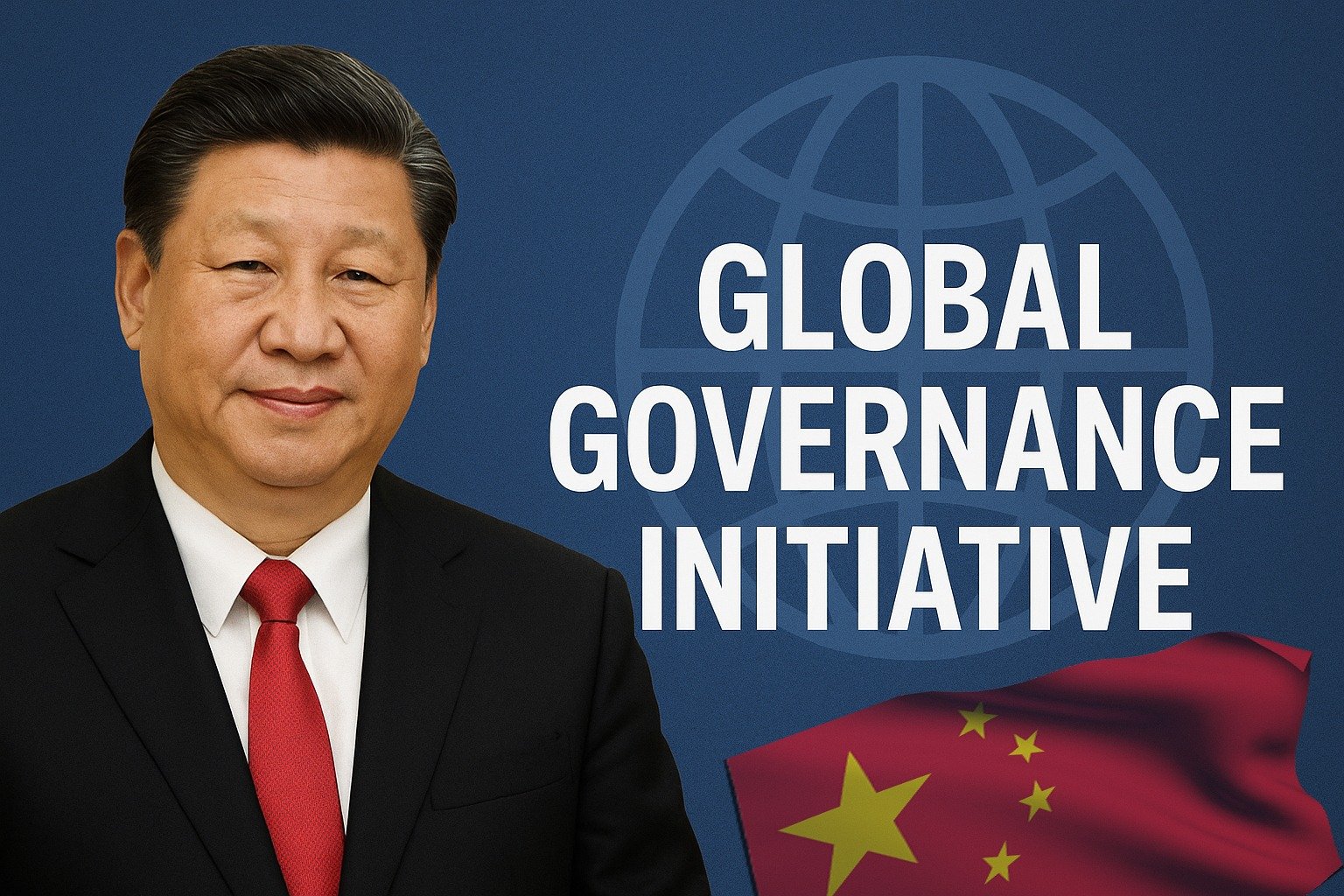This article is especially relevant to global experts as extremism and terrorism have manifested in diverse forms across nearly every region of the world. Both phenomena are often the end products of an underlying radicalisation process that transforms vulnerable individuals into ideological actors capable of violence. Therefore, if the radicalisation process particularly the transition from belief to violent action can be effectively identified and disrupted, it becomes possible to significantly reduce the occurrence of both extremism and terrorism. Counter-radicalisation is not a supplementary measure; it is a fundamental necessity for every nation committed to public safety, social cohesion and long-term peace. In this context, the insights offered in this article respond to a global imperative, providing a scientific, interdisciplinary and prevention-focused approach to a challenge that transcends borders and that’s why? It is kindly requested to readers to share and distribute the article for greater benefit at large.
1. The intersection of radicalisation and mental illness
The intersection of radicalisation and mental illness presents a multidimensional and evolving threat to modern societies. As ideological extremism adapts to digital ecosystems and targets vulnerable youth, mental health challenges are no longer peripheral issues they are increasingly central to understanding how radicalisation unfolds. Psychological distress, cognitive vulnerabilities and psychiatric disorders are now recognised as critical accelerants in the radicalisation process particularly among youth.
Radicalisation is typically understood as the process by which individuals adopt extremist ideologies that may lead to violent or non-violent actions against perceived enemies. This has often been framed through ideological, religious, political or cultural lenses. However, what happens when this ideological progression intersects with untreated or misunderstood mental illness? The outcome is a complex, often unpredictable mix of vulnerability, volatility and violence posing significant challenges to our peaceful societies, institutional prevention and rehabilitation efforts. The result is a dangerous mix that leads to unpredictability, violence and immense challenges for a state.
Emerging evidence suggests that in many cases where individuals later committed violent acts, they had already come into contact with law enforcement or intelligence agencies due to psychological instability but had not yet been recognised as undergoing radicalisation. In other cases, first-line practitioners including teachers, social workers and mental health professionals may have identified a youth as mentally unwell without being aware that the individual was also entering the early stages of radicalisation. In such hybrid scenarios, mental illness may initially dominate masking the ideological development that is simultaneously occurring beneath the surface.
This duality points to a major gap in current understanding and detection, Existing radicalisation models often linear in design lack the operational depth to capture the full complexity of real-world cases. In reality, radicalisation is a fluid, dynamic process involving dozens if not hundreds of interacting variables which output 100s of indicators. Without a process-oriented and scientifically grounded model, the ability to identify and intervene in radicalised mind-sets, particularly in youth remains limited and reactive.
The complexity deepens when individuals exist in a hybrid state where mental illness and ideological radicalisation co-exist and reinforce each other. In such cases, interventions must be guided by experts with not only an understanding of ideological radicalisation but also clinical knowledge of major psychiatric disorders including their behavioural indicators, symptoms and escalation risks. Addiction, personality disorders, autism spectrum conditions, mood disorders and trauma-based illnesses all present unique synergies with extremist ideologies.
In this context, the importance of early detection, specialised training for first-line practitioners, and the deployment of knowledge based and dynamic analytical tools becomes critical. Professionals must be equipped with knowledge that allows them to distinguish whether a youth is (1) solely radicalised, (2) primarily mentally ill, or (3) occupying a hybrid state being mentally ill and radicalised. This distinction is not only vital for accurate diagnosis and treatment but also forms the foundation for prevention and post-prosecution rehabilitation strategies.
This article explores these themes in detail. It examines how various mental health conditions intersect with radicalisation pathways and how extremist ideologies exploit these psychological vulnerabilities. It also proposes a scientific and systematic approach to managing this complexity one that includes dynamic modelling, empirical indicators and interdisciplinary cooperation. The case of Letzte Verteidigungswelle (“Last Wave of Defence”) a radical right-wing youth cell dismantled by German Law enforcement and intelligence authorities in May 2025 serves as a concrete opportunity for analysing these synergies. Composed of teenagers aged 14 to 18, the group’s activities provide a compelling lens for understanding how untreated mental illness, peer dynamics and ideological indoctrination can converge to produce dangerous outcomes.
Ultimately, this paper advocates for the development and application of integrated, evidence-based strategies that support both prevention and rehabilitation. In doing so, it aims to inform not only policymakers and researchers but also law enforcement, educators and mental health professionals on the front lines of this complex challenge.
2. Law Enforcement Excellence and Public Appreciation in Preventing Extremism
The effective intervention by German law enforcement agencies deserves commendation. Through coordinated raids in multiple federal states, they arrested core members of the group before mass-casualty attacks could be carried out. Authorities uncovered explosives, weapons, and communication structures that operated through encrypted social media networks. Their ability to identify, monitor, and dismantle this cell early represents a model of intelligence-driven, pre-emptive security policy.
In the realm of counter-radicalisation two key sectors work tirelessly to prevent extremist violence before it materialises. One comprises law enforcement, intelligence and police agencies focused on security, surveillance and threat elimination. The other includes civil institutions and first-line practitioner’s educators, psychologists, social workers and community leaders who aim to identify and redirect vulnerable individuals before radical ideologies take root. Both sectors strive to fulfil their missions with faithful dedication and urgency. Yet, public recognition is often unbalanced. When a terrorist attack succeeds, the media is quick to highlight failures and assign blame while the rare successes such as the dismantling of the Letzte Verteidigungswelle youth cell receive little attention or appreciation. It is important to understand that behind every failure lies a need for critical analysis, especially of emerging gaps within civil counter-radicalisation frameworks. Often, it is not negligence but a new tactic, tool or technology exploited by radicalised individuals that creates such gaps. Therefore, the most noble and necessary path forward is the continuous development of operational scientific, systematic and knowledge-driven research that supports both law enforcement and first-line practitioners. Public appreciation and civil society acknowledgment are not just deserved; they are essential to keep these actors motivated, resilient, and confident in their ongoing efforts.
3. Nature and Operations of the Group
Letzte Verteidigungswelle emerged as a decentralized, youth-led extremist network that leveraged encrypted digital platforms to recruit, indoctrinate and mobilize. Participants were grouped by geographical sub-units and tasked with proving loyalty through acts of violence such as arson, racist vandalism and assaults. Operating primarily through online forums and secure messaging apps, the network divided participants into regional sub-units and tasked them with demonstrating loyalty through acts of targeted violence ranging from arson and racist vandalism to physical assaults. Among the most notable incidents were the destruction of a cultural centre in Brandenburg and an attempted bombing at a refugee shelter in Senftenberg. Members were actively encouraged to document their actions through photos, videos and messages transforming acts of violence into propaganda tools to boost their internal status and promote the group’s narrative.
This strategy served multiple calculated objectives. First, by spreading footage of violent acts online, the group sought widespread media attention aiming to present themselves as defiant ‘defenders’ of the nation and framing their criminal acts as patriotic heroism. This was designed not only to amplify their message but also to recruit impressionable youth by portraying violence as both meaningful and socially rewarded. Second, they aimed to build a closed digital community primarily on encrypted and anonymous platforms where new recruits could be funnelled, radicalised further and trained to take part in future operations. Third, the network promoted an ideology of urgency and crisis convincing members that immediate violent action was necessary to ‘protect’ their identity, culture and future.
This system of gamified violence, ideological echo chambers and structured peer validation represents a dangerously sophisticated form of youth radicalisation. It mimics the structure of terrorist cells while exploiting the psychological malleability of adolescence, the craving for identity and recognition and the immersive power of digital media. Through this calculated blend of propaganda, social validation and ideological manipulation, Letzte Verteidigungswelle aimed not only to cause direct harm but also to build a self-replicating ecosystem of hate-driven recruitment and action.
4. The Unanswered Question: Ideology or Mental Illness?
Despite the ideological infrastructure, a critical question remains insufficiently explored: Were these youth solely radicalised through ideological means or did untreated mental health issues also play a significant role? This inquiry is crucial not only for retrospective understanding but also for designing effective prevention and rehabilitation frameworks.
International studies increasingly affirm that radicalisation is not purely ideological but systemic. It is shaped by a convergence of internal (psychological, emotional and cognitive etc.) and external (ideological, social, political etc.) variables. Youth are particularly susceptible due to identity instability, heightened emotionality and susceptibility to peer influence.
5. Psychological and Neurodevelopmental Risk Factors
Mental health conditions can act as accelerators in the radicalisation process. To make these abstract risks more understandable, we must look at how these disorders specifically interact with extremist recruitment and actions. Each disorder brings distinct cognitive and emotional vulnerabilities that when left untreated can be manipulated by extremist ideologies:
- Post-Traumatic Stress Disorder (PTSD): Individuals suffering from PTSD often experience intense flashbacks, emotional detachment and hypervigilance. The chronic fear and perceived need for defence may align seamlessly with radical ideologies that promise protection, vengeance or retribution. A person with PTSD may interpret propaganda as a call to justice for their trauma, creates a state of constant readiness and distrust. A person may see the world through a lens of danger and betrayal. Extremist groups exploit this by framing themselves as the protectors or avengers. The hyper-alertness associated with PTSD makes such individuals more likely to act on threats perceiving them as immediate.
- Mood Disorders: MD can transform personal despair into ideological purpose. Depressed individuals may be drawn to martyrdom narratives finding in them a reason to live or die. Those in manic states may initiate spontaneous and unplanned acts of violence under delusions of grandeur or destiny. Depression can generate deep hopelessness and detachment driving individuals to seek meaning or belonging in extremist narratives. Bipolar disorder with its manic highs and depressive lows can increase susceptibility to impulsive acts during manic phases and ideological seduction during depressive episodes.
- Autism Spectrum Disorder (ASD): People with ASD often think in black-and-white terms and may develop obsessive interests. If these interests align with political or ideological subjects and if the individual lacks robust social support they may fixate on radical content. Their difficulty in interpreting manipulation makes them especially vulnerable to online recruitment.
- ASD introduces rigidity and literal thinking which can make radical ideologies appear morally unambiguous and logical. Online environments become echo chambers for such individuals, reinforcing extremist views that are hard to deconstruct later due to cognitive inflexibility.
- Psychosis and Schizophrenia: These conditions involve delusions and hallucinations. If radical ideologies mirror the individual’s internal hallucinations (e.g., divine commands or conspiracy theories) the person may perceive themselves as a chosen agent. This makes such cases unpredictable and dangerous.Psychosis and Schizophrenia blur reality often producing religious or apocalyptic delusions. These can perfectly align with extremist ideologies that preach holy war, saving a nation, culture or country, end-times or divine missions. Interventions are extremely difficult because the individual’s sense of reality is impaired.
- Personality Disorders: Different types carry unique radicalisation risks. Borderline Personality Disorder is marked by intense emotional swings and impulsivity; Antisocial Personality Disorder by lack of empathy and aggression; Narcissistic Personality Disorder by grandiosity. All these traits can be weaponized by extremist groups.Personality Disorders enable long-term involvement in extremist groups. Antisocial individuals may gravitate toward the violence and power dynamics within such groups. Narcissists may seek leadership roles while those with Borderline traits might emotionally bond with the group and later betray or sabotage it.
- Addiction: Substance use impairs judgment, increases impulsivity and can drive individuals into criminal networks where radical ideologies thrive. Addicted individuals are often desperate making them susceptible to offers of belonging or resources in return for extremist acts.Addiction not only weakens moral inhibitions but also introduces radical actors through shared spaces like prisons or criminal rings. Financial need may drive participation in extremism for material reasons while ideological motives may emerge as secondary rationalisations.
In summary, mental illness does not cause radicalisation. But when combined with ideological exposure and social alienation, it creates a perfect storm from identity crises to a youth in a noble cause of changing the cruel world. Understanding these synergies is key to developing preventive interventions that address the root emotional and cognitive vulnerabilities not just the ideological surface.
6. Way Forward Counter Synergistic Solution
These cases expose a critical truth: ideology and mental illness are not mutually exclusive. In many cases, they operate synergistically. Psychological distress creates an internal vulnerability a void which extremist ideologies seek to fill. Inversely, extremist movements actively target such individuals exploiting their mental fragility with promises of power, belonging or revenge.
Returning to Letzte Verteidigungswelle, it is essential that the investigation adopt a dual approach criminal and clinical. Ideological de-radicalisation alone will be insufficient unless paired with psychological diagnostics and treatment. Surely for some members, their entry into extremism may have been facilitated as much by mental dysfunction as ideological exposure.
To develop such integrative strategies, the global counter-extremism community must begin evaluating scientific and systematic tools capable of comprehensively accounting for both internal and external variables. One such promising framework the “Tahir Equation of Radicalisation” may offer new insight. Proposed as a research-based, dynamic, system-oriented model, the Tahir Equation contrasts with traditional linear theories by recognising radicalisation as a process shaped by interacting psychological, environmental and ideological forces over time. Rather than assuming a one-directional pathway from grievance to violence, it models radicalisation as a set of fluid stages driven by variable intensities such as emotional instability, impulsivity, trauma, paranoia, ideological exposure, peer pressure, social alienation and other multiple variables.
While still in its testing phase, the Tahir Equation could be used as a “complementary analytical tool” in future investigations of radicalised youth. It is not proposed as a prescriptive directive for German authorities but as a potential operational model based on an equation that could assist practitioners in identifying where individual vulnerabilities especially mental illness interact with ideological commitment. By adding the additional variables based on mental and psychological risk factors, a holistic and understanding of direction, intensity, grading and range of radicalised mind set can be systematically analysed. Through such mapping, interventions could be designed to interrupt radical trajectories before violence occurs and driver variables of radicalisation along with clinical treatment can be reversed. Importantly, the equation also emphasises rehabilitation by targeting the root causes and healing the psychological wounds that extremist ideologies exploit. The variables of equation are detected from comprehensive number of indicators (each indicator is output of a driver variable or variables) of radicalisation process and mental psychological illness and change factor can be observed for x time, if value frequency of any initial indicator is decreased, increased or remained same. In addition, if any old indicator disappeared because of DE radicalisation and clinical treatment initiatives or any new indicator emerged.
Ultimately, the solution lies in dismantling extremist networks and cultivating healthy-minded citizens in parallel, proactively and priority basis. Some of these young people though radicalised and dangerous can also be products of systemic failure: neglected mental health, ignored warning signs, digital grooming, and identity fragmentation. If society can identify early and heal the root causes these same individuals may yet become conscious and constructive members of democratic life.
The exposure of Letzte Verteidigungswelle should not only be a triumph of law enforcement but also a wake-up call for deeper institutional coordination: between schools, clinics, intelligence units, law enforcement, community services and digital platforms. This case teaches us that violence does not begin with the act. It begins long before with untreated pain, unmet needs and unanswered questions. To counter radicalisation, we must heal the mind as well as correct the message.
The “last wave of defence” must not be left to misguided youth acting on rage and delusion. It must be led by a society that understands the science of radicalisation, respects the complexity of mental illness and is committed to building systems of prevention, care and accountability. The Tahir Equation of Radicalisation, alongside other scientific innovations offers a meaningful step in that direction one guided by reason, rooted in research and driven by the imperative to rehabilitate rather than simply condemn.
Conclusion
Germany’s law enforcement agencies rightly deserve recognition for identifying and neutralising a dangerous youth extremist network before it could inflict greater harm. But the real test lies in what follows: Can we use this moment to deepen our understanding of how radicalisation process truly works? Can we develop tools that treat not just the symptoms but the psychological and ideological root causes?
The answer begins with acknowledging complexity. Radicalisation is not linear. It is not purely ideological. It is not immune to trauma, mental illness or emotional suffering. By recognising these truths and integrating them into investigative and preventive frameworks, we can transform misguided, radicalised youth into healthy and critical-thinking citizens. We all must work on and develop tools and methods of true operational value which offer a new lens for this work as knowledge based scientific, systematic and scalable against randomly selected experience observation work therein linear models are used with limited number of indicators and no single model has ability to confirm the originality of any indicator. The final wave of defence then is not fear or punishment. It is understanding, research, rehabilitation and resilience for model peaceful society and prosperous globe.
Academic & Scientific References
- Corner, E., & Gill, P. (2015). A false dichotomy? Mental illness and lone-actor terrorism. Law and Human Behavior, 39(1), 23–34. https://doi.org/10.1037/lhb0000162
- van den Bos, K. (2020). Why people radicalize: How unfairness judgments are used to fuel radical beliefs, extremist behaviors, and terrorism. Oxford University Press.
- Weine, S., & Kazemzadeh, A. (2022). Mental health professionals and the prevention of violent extremism. Current Psychiatry Reports, 24, 93–101. https://doi.org/10.1007/s11920-021-01299-w
- Liem, M., & Nieuwbeerta, P. (2010). Suicidal terrorism: A risk assessment. Journal of Threat Assessment and Management, 2(1), 22–34.
- Bjørgo, T. (2013). Strategies for preventing terrorism. Palgrave Macmillan.
Institutional & Policy References
- European Commission. (2021). Youth and violent extremism: What we know, what we need to know. Radicalisation Awareness Network. https://ec.europa.eu/home-affairs/ran_en
- International Centre for Counter-Terrorism. (2022). Mental health and the prevention of violent extremism. https://icct.nl/publication/mental-health-and-pve/
- United Nations Office on Drugs and Crime. (2017). Handbook on children recruited and exploited by terrorist and violent extremist groups: The role of the justice system. https://www.unodc.org/documents/justice-and-prison-reform/Child-Victims/Handbook_on_Children_Recruited_and_Exploited_by_Terrorist_and_Violent_Extremist_Groups_the_role_of_the_justice_system.E.pdf
- Bundeskriminalamt. (2024). Jahresbericht Politisch motivierte Kriminalität (PMK) 2024. https://www.bka.de
- Bundeszentrale für politische Bildung. (2024). Right-wing extremism and radicalisation in Germany. https://www.bpb.de
Media & Case Reports
- Deutsche Welle. (2025, May). German police foil youth extremist plot targeting refugees. DW News. https://www.dw.com
- Der Spiegel. (2025, May). Junge Extremisten planten Anschlag – Polizei zerschlägt Netzwerk. Der Spiegel. https://www.spiegel.de
- BBC News. (2025, May). Germany thwarts teen-led terror group plotting attacks on minorities. BBC News. https://www.bbc.com/news/world-europe
Theoretical Models & Operational Tools
- Mahmood, T. (2025). The Tahir Equation of Radicalisation: A system-oriented model integrating mental health and ideological extremism. [Unpublished manuscript]. Research Gate.
- Silke, A. (2015). Risk assessment of terrorist and extremist prisoners. UK Ministry of Justice. https://assets.publishing.service.gov.uk

Mr. Tahir Mahmood is a renowned expert in the field of counter-radicalisation, known for his extensive work with various governments to solve complex challenges through knowledge based methods and out of box solutions.

Renowned expert in the field of counter-radicalisation, known for his extensive work with various governments to solve complex challenges through knowledge based methods and out of box solutions.










